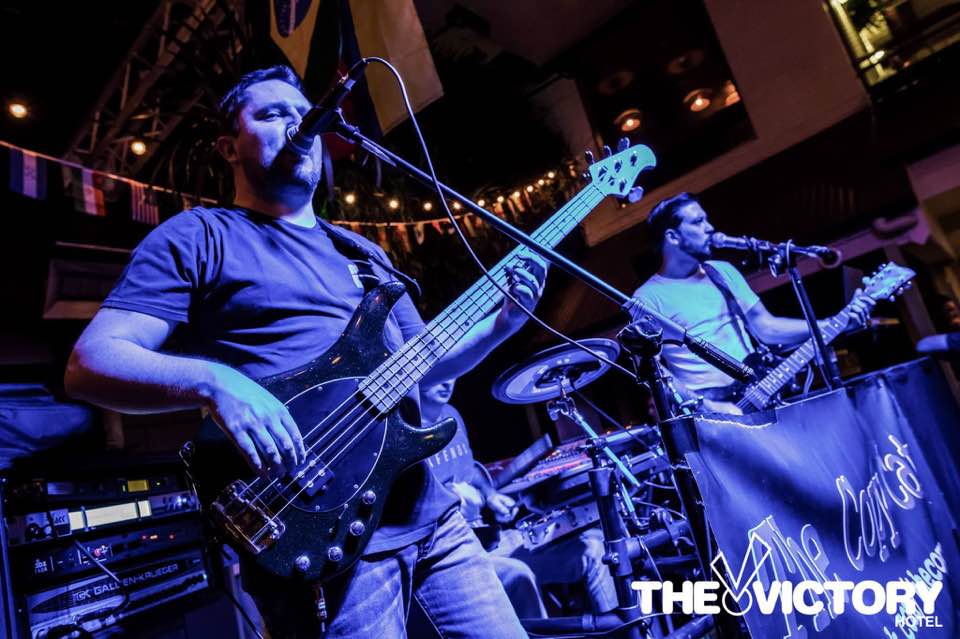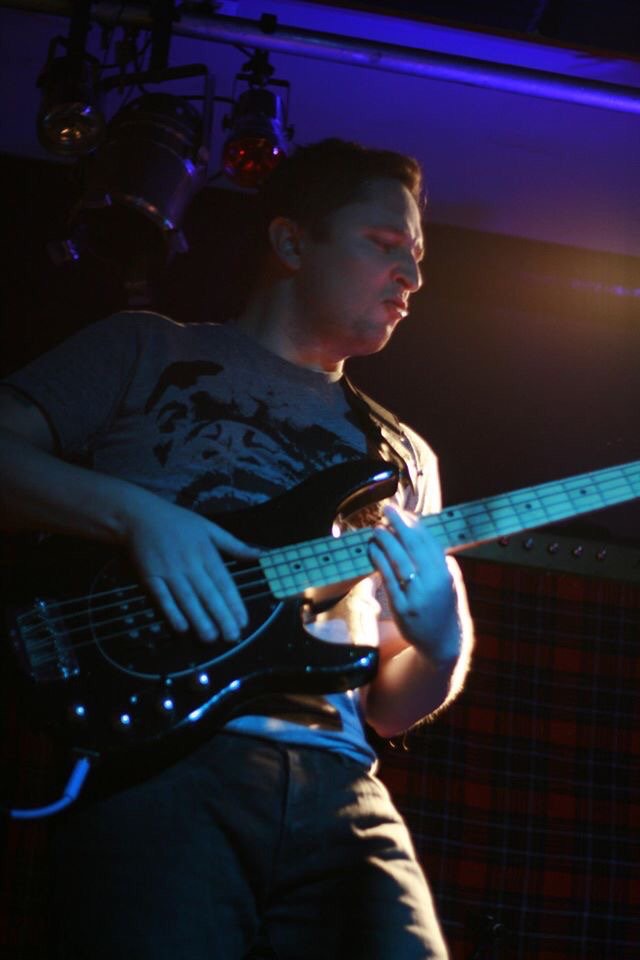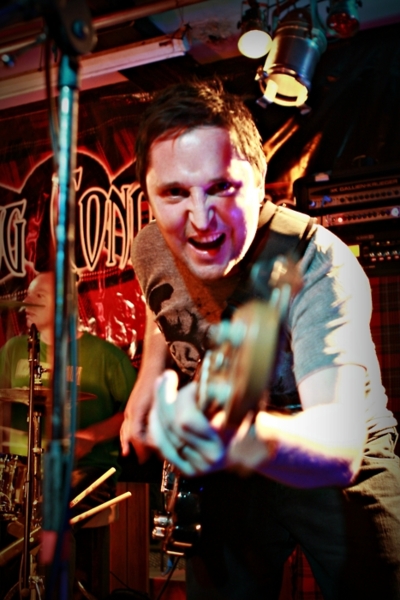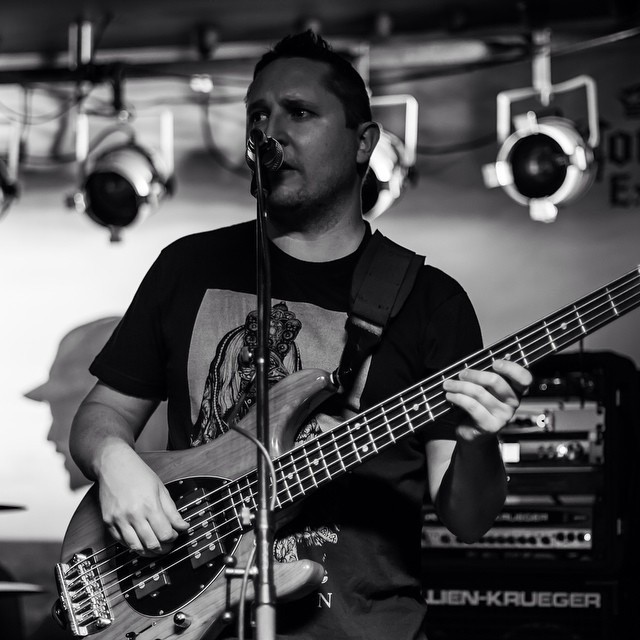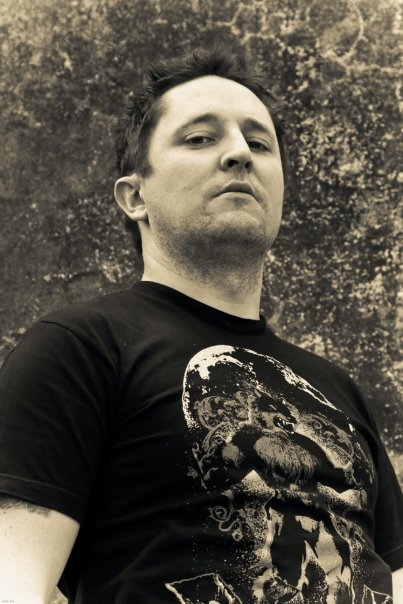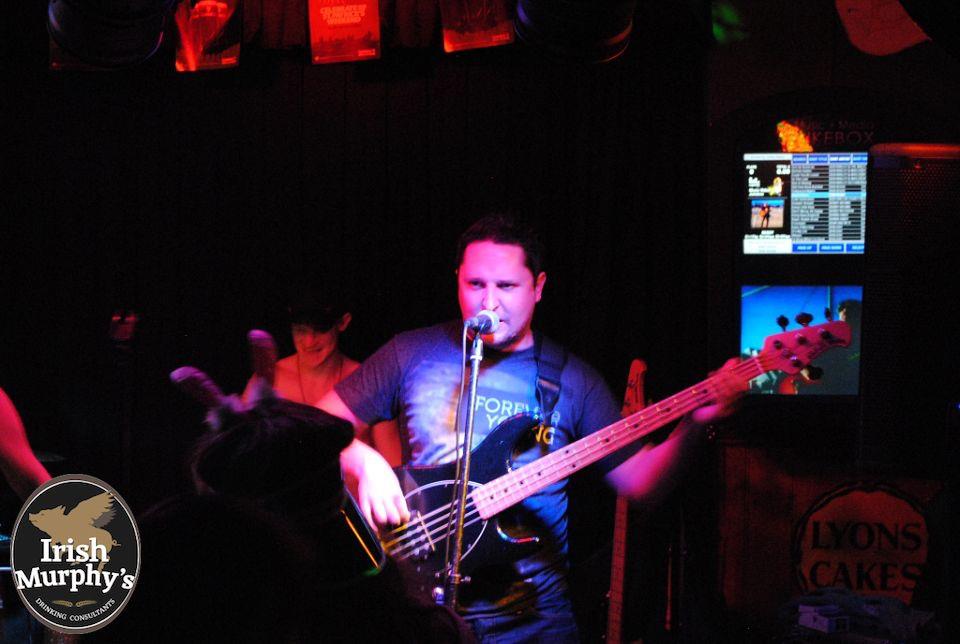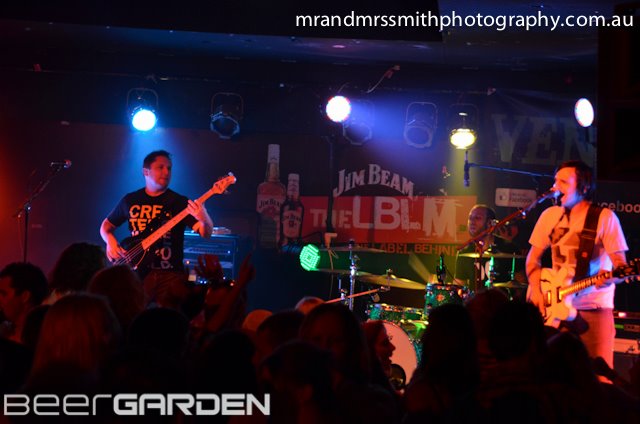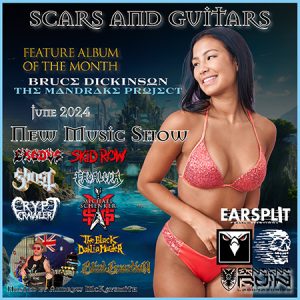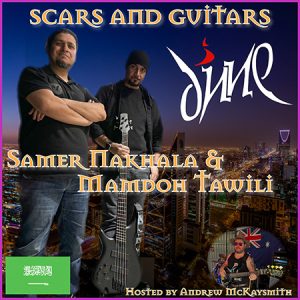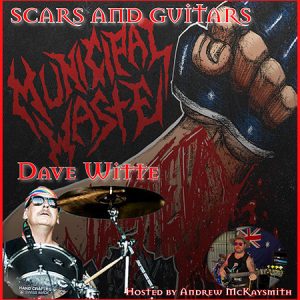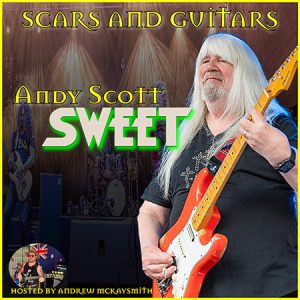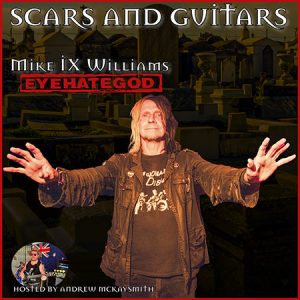
Andrew McKaysmith on why he loves to talk, write and think about music!
When electrical engineer Michael Faraday pioneered the use of electromagnetic induction in 1831, he could never have imagined it would be the catalyst for world-changing inventions and processes. Faraday’s concepts began the transition to automation via the electric motor, electrifying many processes and paving the way for appliances and gadgets we take for granted in the 21st century. So imagine if Faraday were here, almost two centuries later, watching the application of his principles in an entirely different setting.
What would Faraday think if he were standing side-of-stage in a heaving inner-city club, far removed from the Georgian era, as Morbid Angel’s Trey Azagthoth, dripping with sweat and hyper-focused, launches into a ferocious feast of riffs that peak with a blistering two-handed tapping solo? Azagthoth, like Jimi Hendrix and Stevie Ray Vaughan before him, supremely commands a stage using a guitar that amplifies the sound of its strings using a pickup, an invention that uses Faraday’s principles of electromagnetic induction.
But you’re not reading because you need a history lesson. It’s highly likely that you are already aware that as moderator of this site, I am also the host of the Scars and Guitars podcast series, which I dedicate to conversations with prominent names in rock, heavy metal, and extreme metal.
When I first conceptualised this updated website, I thought carefully about who would read it. Many listeners from all over the world have contacted me to share how much they enjoy the podcast. They are typically heavy metal fanatics, very similar to me. But the site is also an opportunity for the casual observer to become acquainted with some exceptional musicians outside the sphere of their typical listening habits. So I have tried to create an experience that serves both the seasoned heavy metal fan and the relative newcomer – a place that functions as an introduction and an enlightened study into the motivation behind many musicians who craft uncompromising sounds under the broader banner of rock, heavy and extreme metal.
It’s something I know well because, like so many of you, I imagine, I’ve lived it.
I was the kid who just couldn’t wait for school to finish. Not only the end of the school day, week, term or year but the whole damn thing. I felt stifled and misunderstood, which is why I retreated into music. To compound matters, I didn’t like Nirvana, Soundgarden, Pearl Jam or Smashing Pumpkins. They were the best-represented bands in the t-shirt-wearing stakes of the early to mid-’90s, and as a consequence, I pursued musical appreciation as a solo affair. I’d head into the city and trawl second-hand record stores, which helped me connect more intensely with the musicians. Albums by bands such as Exodus, Kreator, Annihilator and Destruction were going for a song back in those days, which suited me because these were the types of groups I gravitated towards.
My rock and metal odyssey began, though, with the relatively benign glam outfit Poison. I was a shade over ten years of age, and the advertisements for their in-market release Open Up and Say… Ahh! were featured on daytime commercial free-to-air television. After singing in school choirs and a year’s worth of clarinet tuition, I thought Poison was what music was supposed to resemble. Well, cool music at least, and it wouldn’t be long before I started paying attention to the Iron Maiden posters on the walls of study rooms at the boarding school I attended.
I became enthralled with Maiden’s music and pursued it with gusto, particularly because of bassist Steve Harris’ charging basslines, the twin-lead guitars of Adrian Smith and Dave Murray, and the voice of the man whom many consider the greatest heavy metal frontman of all time, Bruce Dickinson. Many years after I first heard them, I still love Maiden, and they were also my gateway to investigating much heavier sounds.
It was fortunate then that Triple J, Australia’s youth radio network, dedicated three hours to the hardest and heaviest sounds available. Casting my mind back, I think it was on a Tuesday night that Triple J broadcast The Three Hours of Power to sate the desire of young fans like myself. The day of the broadcast felt like Christmas to me, and in the early ’90s, there was no internet, of course, so almost every show was a bonanza of new sounds from bands with which I had yet to become acquainted. Bolt Thrower, Cancer, Type O Negative, Cannibal Corpse, Morbid Angel, Satyricon, Mayhem, Carcass, and At The Gates – these are only a few of the outfits that I would become a fan of after hearing them on the program.
The ’90s was also the commercial peak of the glossy magazine. For those too young to remember, you could find a print publication for just about every hobby and subject imaginable, and it always felt just a bit special picking up a magazine you looked forward to reading. As a young fellow, the metal publications were a portal to another realm. It was like reading reports from victorious warriors who had found a way to perform and record the most extreme sounds imaginable amidst the din of pop and urban music. Most magazines had a general release about once a month, or even once per quarter, and it was the only time you got to read about a favoured band and see their photos. Groups weren’t in your face courtesy of social media like they are now. These days, users can access information and pictures of bands from any point in history. There’s no barrier to entry, which is excellent. Still, I look back with a sense of nostalgia when I think of reading about a band, imagining what they must sound like based on the reporter’s use of descriptors and then discovering their music by taking a chance on a cassette or CD.
The United States-based Metal Maniacs covered extreme metal almost exclusively. The editors and reporters exposed readers to some of the great underground outfits that were just beginning to emerge, and I felt a connection to many of the Floridian death metal outfits the magazine showcased as I chased the heaviest possible sounds.
The mid-’90s was the era of the burgeoning Scandinavian black metal scene; however, I found it harder to accept that the musicians were wearing the makeup or ‘corpse paint’ synonymous with black metal. It was just a bit too theatrical and reminded me of an evil KISS. The genre eventually won me over, courtesy of the quality of the music offered by leading lights and the comprehensive coverage in Metal Maniacs. It’s been fantastic to interview Satyr and Frost from Satyricon, Demonaz from Immortal, Erik from Watain and Ihsahn from Emperor for the podcast; they are some of my favoured interview subjects.
It wasn’t just heavy metal that captured my attention, though. Friday nights were a treat as Wayne DZ selected cuts from the genres of garage, punk and early hardcore on his program, The Alternative Music Show, which broadcasts on Sydney’s 2SER FM to this day. I played competitive sports throughout school, and Wayne’s program helped me prepare mentally for the Saturday morning game of soccer in the winter months and basketball in summer. Wayne picked cuts from bands such as Dead Kennedys, Angry Samoans, XL Capris, and The Saints. Most of the time, I would be in bed, drifting off to sleep to the lo-fi sounds of so many great artists. Dead Kennedys in particular had a profound effect on my musical aspirations as the guitar intro to “Chickenshit Conformist” was one of the first picked guitar passages that I’d master. It inspired me to keep going on the guitar, and the bass, and emulate the many heroes in my growing CD collection.
I much prefer the garage and punk of the ’60s, ’70s, and ’80s to what came after. I don’t dislike Green Day (I predicted they would be huge when I first heard them on The Three Hours of Power) and I’ve performed songs by Blink-182 and The Offspring in cover bands more times than I can recall. The audience reaction is almost always enthusiastic, but it just seems to lack an X-factor. Sorry, I can’t help how I feel, and I tried to get into the Epitaph and Fat Wreck Chords bands like NOFX, Satanic Surfers, Bad Religion, Lagwagon and No Fun At All, going to shows and listening to their CDs, but the genre just never grabbed hold of me.
I’ve been playing the bass guitar since 1992. I’ve barely put it down since I started playing in bands around 1998. People ask why I chose the bass, and I can recall almost the exact moment. I remember hearing John Deacon’s mammoth groove in Queen’s “A Kind of Magic”, and thinking, ‘I could probably do that’. I got Queen’s Greatest Hits II for my 14th birthday and studied John’s playing across the compilation. Bill Gould from Faith No More and Les Claypool from Primus came into my orbit around the same time, and they all helped launch my career as a bassist as I tried to figure out what they were playing. Doug Wimbish from Living Colour, Rick Skatore from 24-7 Spyz and Fishbone’s John Norwood Fisher round out the figures who have had a tremendous impact on my progression as a player. I couldn’t replicate what these musicians were doing on their albums, but I certainly tried.
My first bass guitar was a red Fender Precision copy by Hohner that I acquired from a student a few years ahead of me at school. After I finished school, I replaced it with a jet black Yamaha, which was an upgrade that suited my limited budget in place of the much yearned-for Ibanez SDGR I wanted. With the Yamaha bass in hand, I sat adjacent to an amplifier so old that the black Tolex encasing the plywood frame had frayed to the edges, and played along to an album recording of many of my favourite cuts. This strategy helped me hear the rumble of my bass over the track I was trying to learn, which was playing over headphones through a well-used orange Sony Discman. Back in those days, there were no easily accessible instructionals as there are today via YouTube, so you had to learn by ear or follow tablature. Most of the songs I wanted to learn would never grace the black and white print at the back of Guitar World, and this meant I had to replay and repeat sections of a track so I could study what the bassist was doing. Many years later I’d put into practice what I’d learned through this period of my life when I sought session work and learnt songs at short notice as an ‘on-call’ musician for cover bands in and around Brisbane.
Doug Wimbish is probably the bassist that I endeavoured to mimic the most, so it was a thrill to finally discuss his impact on my playing during an interview with the man himself for the podcast. I’ve thought about his playing a lot over the years; I’ve studied his impeccable groove for hours on end to try to understand how and why he made the decisions he did. One of my favourite songs ever written is Depeche Mode’s “Useless” – a song, ironically, that I loved for many years before discovering it was Doug who performed the bass line that drew me to the track in the first place. We talked about his contribution on “Useless”, and many aspects of his career in which he has appeared on albums from the Rolling Stones, Mick Jagger, Depeche Mode and of course, Living Colour. As with so many of the iconic artists who have appeared on the podcast, my allocated time expires, and I’m left with more questions to ask than there is time available.
Throughout my twenties and thirties, I became obsessed with other great bass guitarists. It’s a pursuit that persists. Name a prominent track that has an identifiable bassline, and I can probably tell you who the bassist is and the bass that he or she played – and, more than likely, their favoured choice of amplification on stage. The role of the bass guitar is so often critically overlooked. Fans seem to have no idea how essential players such as Bob Daisley (Ozzy Osbourne), John Paul Jones (Led Zeppelin), Geezer Butler (Black Sabbath), Bill Wyman (Rolling Stones), John Entwhistle (The Who) and many others are. Rock and metal have some tremendous players amongst their ranks; however, for the next level of inspiration, I gravitated toward disco, funk and ’60s R&B and found some extraordinary players.
Bernard Edwards from Chic, Larry Graham from Sly and the Family Stone, Mark King from Level 42, and session titans such as Jaco Pastorious, James Jameson, Carole Kay, Stanley Clarke, Nathan East, Will Lee, James Jamerson and Tony Levin – these are the bassists whose playing you will have heard whether you realise it or not, such are the volume and span of classic songs they have contributed. I have performed “Footloose”, credited to Kenny Loggins and taken from the film of the same name, almost every time I played on stage in the past 10 years. It’s next to impossible to replicate the divine playing of Nathan East who is the musician who truly makes the song come to life through his marvellous bass line, but I have a lot of fun trying.
I prepare for a gig the same way an athlete might approach a big game or a competitive event. Musical performance is too important to leave any potential for failure to chance. Prepping my bass guitars, I ensure the strings have appropriate tension, holding the bass at eye-level and checking for any bias in the neck that will force it out of tune. I only gig with batteries that have at least 90% charge to avoid embarrassing mishaps and believe me, I’ve had a few of them over the years. It’s horrible to hear the volume of your instrument suddenly drain mid-performance. My amplification stack is set and checked for any serious flaws at home before leaving for the venue; this way I have peace of mind it should work when the show gets going.
The load-in to a venue, typically at a pub or a Returned Services League (RSL)-type venue, is an opportunity to take a walk around and check out where people are congregating and to assess the demographic. This strategy gives me the chance to determine what songs should work and those we should avoid. You won’t know any of this until you’ve got many years of performance under your belt. I consider musical performance integral to my identity, which is why I take it so seriously. It’s an outlet that has given me a lot of joy over the years, and I believe I will carry my passion for performance for many years to come.
As a musician who gigs semi-regularly, this provides me with the tools to connect with a musician when I am not too familiar with their work. I’ve conducted interviews on short notice and to be authentic and interesting (for both the subject and those who listen to the podcast), I have found it best to approach the conversation as a fellow musician, not necessarily as a journalist.
Sharing a story from my on-stage exploits has often led to new and interesting insights from interview subjects. I can sense their relief as I thread my perspective as a musician into the conversation, rather than asking the bland questions that many so-called music journalists offer. Interviews are often conducted in a block, and if the subject is six interviews into a cluster of 12, they will certainly have been asked many of the same questions. I believe they appreciate that I use a different tactic, as I endeavour to uncover how and why they create the music they do, which is the subject that fascinates me the most.
Many musicians start learning their instruments as children, developing the basics from approved content in an academic curriculum typically associated with the school they attend. At some point, though, the inspiration to craft original music develops, and a musician chooses a genre. But why perform original music and what is the inspiration behind it? That’s what I try to uncover.
Heavy metal’s accessibility means that a young music fan can mature into adulthood, and become a vital component within a favoured band. Peter Tägtgren is the heavy metal fan from Sweden who found an outlet for his passion through the death metal vehicle Hypocrisy, and well-received industrial acts Lindemann and PAIN. But his story goes beyond the ‘norm’. Peter is critically acclaimed for giving many modern extreme metal bands a disarmingly crisp sound. His philosophies in the studio define a generation of bands on labels such as Nuclear Blast and Century Media. He even helped the collective that many believe should honourably receive the title as the greatest of all extreme metal acts, Celtic Frost, regain their mojo with the 2006 release, Monotheist. That he could connect with his musical heroes on a professional level isn’t lost on Peter, who told me that he was “really happy to be a part of (Monotheist) because I grew up on Celtic Frost and Hellhammer… ’82, ’83, ’84 – I can’t remember exactly when, but somewhere around there when I was growing up. It was great actually to produce an album with them in later years.”
Through conversations with luminaries in the industry such as Peter, I’ve learned that heavy metal is a fan-focused pursuit. But something else I have learned through my many interviews is that musicians who have achieved critical admiration and a high profile would become some of my fondest interview subjects; they are exceptional human beings.
I interviewed Jeff Dunn AKA Mantas, the guitarist from British iconoclasts Venom (now Venom Inc.) in 2017 when I was less than a hundred interviews into the podcast escapade. Jeff took my questions thoughtfully and understood that I had gone to great effort to prepare for the interview. I was also able to chat with fellow band members Anthony Bray (AKA Abaddon) and Tony Dolan (AKA Demolition Man) and each offered a near-identical experience to Jeff, helping affirm a belief that heavy metal, extreme metal, is the people’s genre. It was made by fans of music, for fans of music.
I have conducted over 600 interviews, and I perform most of them with the podcast series in mind. I submit the balance of interviews for publishing as written pieces for blogs and music sites. The interview subjects mostly live in the United States, Australia, Western Europe and Scandinavia and many of the musicians are in bands that I started listening to throughout the ’90s.
The Scars and Guitars podcast acted as the incentive for something unintended that happened early in my podcasting journey – it gave me plenty of reasons to reassess my career and professional pursuits.
I had grown weary working for Australia’s largest telecommunications company and was at the point where I recognised the need for a career change. I had been balancing working as a musician with my role in the company; however, in my late 30s I noticed my day-to-day energy levels were diminishing. Working on the Sunshine Coast, which is north of Brisbane in Queensland, Australia, would be many people’s idea of a perfect place to foster career pursuits and raise a family. The Sunny Coast certainly lives up to its reputation as a fabulous tourist destination. It is hardly the type of place one would associate with stress and mental overload. However, it was over my usual long black coffee after an early morning swim at Maroochydore beach before work that I realised I needed a permanent change and not just a holiday. I had started the podcast by that stage and had been writing for a resurrected version of Hot Metal for a few months. So I became attracted to the idea, remote as it was at the time, that I could successfully pivot from my current role into a career more suited to my interests. University beckoned.
I was 39 at the time, married with two kids and many financial responsibilities. I realise many people would baulk at the prospect of leaving behind the familiar and starting anew. It is daunting. However, I’m sure many readers will also identify with the theme of reinvention. There are crossroads in everybody’s life, where the path ends, and one must forge new ground. I had arrived at mine. It became clear over a few conversations with my wife that if I were going to have a chance at succeeding as a writer and broadcaster, I would have to put some academic rigour behind it. Ultimately, it took a single open day to convince me that I would benefit from academic instruction at Bond University on the Gold Coast.
In the first few semesters of the degree, I developed a nous for news media. I knew that to be in with a chance of a career in media, I’d have to think beyond writing and talking about music. So I completed an internship at The Gold Coast Bulletin and notched up many hours of work experience in the newsroom.
I am attracted to the cut and thrust of the newsroom due to my interest in current affairs and politics, a far-reaching subject that I have spoken about many times on the podcast. Should politics even play a role in the music industry? I believe that music is a perfect vehicle for people to express their thoughts and advocate for social change – think of bands like Memoriam, The Clash, Rage Against The Machine and Living Colour.
My greatest reservation when conducting interviews for the podcast is this: How do I guarantee that the points expressed on my show by an interview subject are not just bullshit? I have given this a lot of thought and decided that it doesn’t matter. The interview subject on the Scars and Guitars podcast is allowed to share their thoughts on any topic, whatever the impetus, and it’s up to the listener to determine if it is relevant, or even truthful. At times I have elected to keep comments out of the public domain by not broadcasting a conversation, although that was early in my podcasting career when I was motivated by the desire to protect the interview subject from online trolls and unnecessary criticism. I wouldn’t do the same thing today unless an interviewee made the request.
Sometimes an interview subject has asked me to edit aspects of a conversation, and some guests have requested I shelve entire discussions. I’ll never edit audio to change the context or the tone of an episode. If I think that removing an aspect of the conversation could confuse listeners because of references to the absent audio elsewhere in the episode, I’ll leave the entire episode on the cutting room floor, never to be released.
Many of my interviews have featured on Blabbermouth, Metal Injection, Ultimate Guitar, and many other musically focused news aggregation websites. In a way, they promote the artists’ work, no matter how scandalous the headline they choose to use. I certainly hope I can compel listeners to investigate a musician or an artist’s body of work, or at the very least the reasons behind the headline. But many users are all too prepared to offer an opinion based on a headline generated by Blabbermouth et al. and in the vast majority of cases they aren’t bothered to listen to the entire interview and hear the context in which the interview subject has offered their perspective. How do I know this? Beyond the nature of the comments underneath a post, which can veer from the mildly supportive to the hostile and vulgar, the podcast platform I use provides a bunch of relevant data. Using this information to triangulate listener numbers after a podcast episode features on (say) Blabbermouth, I can say for sure that it has minimal effect boosting listener numbers, which confounds me.
Social media is a tool driven by user engagement, and many users seek scandal and controversy as to their principal means of engagement, prompting sites such as Blabbermouth to continue to offer clickbait-style content. Overall, the musicians I have interviewed aren’t that bothered when audio from the podcast is ripe for click-bait; it’s part and parcel of being in the public eye. For better or for worse, Blabbermouth and similar sites are here to stay. They are the sites that act as heavy metal’s Fox News or CNN, and it’s up to the user to determine the importance or relevance of a headline.
I gave you some insight earlier about my attitude toward music as a teenager, and as an adult I have concluded that music has been a spiritual presence in my life. Music is a dear friend, a confidant, and something that has never let me down. I’m so grateful that for the price of a microphone and an internet connection, so many musicians have invited me into their world, and they are willing to share intimate thoughts on their music.
The book, podcast and video interviews are really about me trying to bring things full circle. Thanks for joining me on the journey and I genuinely hope you enjoy reading my thoughts on the interviews conducted with so many incredible musicians for the Scars and Guitars podcast series.
